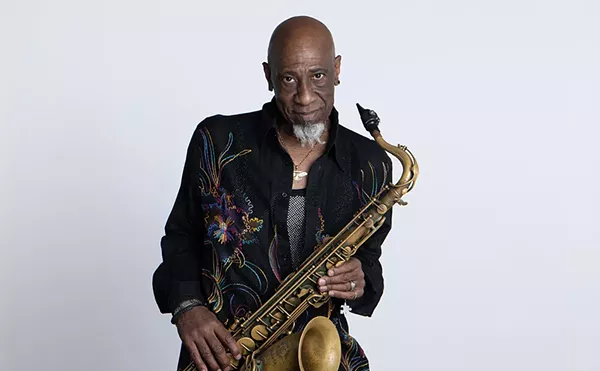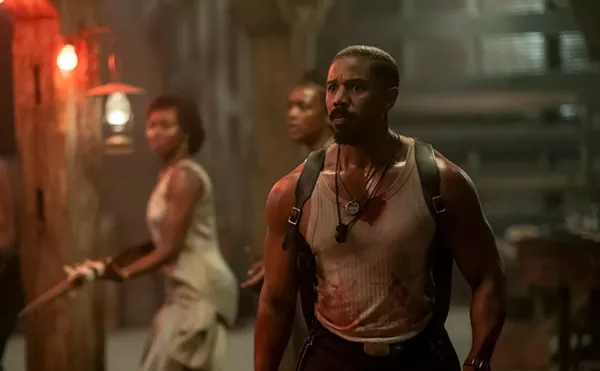
Audio By Carbonatix
[
{
"name": "GPT - Leaderboard - Inline - Content",
"component": "35519556",
"insertPoint": "5th",
"startingPoint": "3",
"requiredCountToDisplay": "3",
"maxInsertions": 100,
"adList": [
{
"adPreset": "LeaderboardInline"
}
]
}
]
Goya's Ghosts is the work of an old master who, like the painter he depicts, is a tireless chronicler of his tumultuous times, even when he's making a period film. Czech-born director Milos Forman has said he wanted to explore the effects of the Spanish Inquisition long before the current war on terror began, but his historical fiction works as a pointed commentary on the belligerent righteousness of contemporary politics.
In addition to the religious intolerance epitomized by the Inquisition, the film delves into the paradoxical aftermath of the French Revolution, when the self-anointed Emperor Napoleon I imposed freedom by violently overthrowing a sovereign government in Spain. All of which makes Forman's backward glance feel incredibly timely. Too bad the resulting film isn't as good as its intentions.
The Monty Python sketch asserts, "Nobody expects the Spanish Inquisition!" Forman reminds us we should be ever vigilant, even if the tale he's created is messy, overstuffed and maddeningly melodramatic.
A big part of the problem is that Goya's Ghosts isn't actually about Francisco de Goya (Stellan Skarsgård): He functions as an inadvertent matchmaker in 1792 Madrid by bringing together Brother Lorenzo (Javier Bardem), a rising star in the Office of the Holy Inquisition, and Inés Bilbatúa (Natalie Portman), the daughter of a prosperous merchant and one of his most angelic models.
Forman and co-screenwriter Jean-Claude Carrière have created these fictitious characters as archetypes of tyranny and ambition, innocence and obedience, and their lives become inexorably entwined when Inés is called before the inquisitors and "put to the question," their euphemism for torture. In this case, confession is not good for the soul (or the body of the confessor).
The focus is on fictional constructs caught up in the whirlwind of history, not the man who really embodies his time. Goya knew the highs and lows of Spanish society — painting royalty and creating prints that visualized degradation — but Forman eschews the opportunity to explore Goya's artistic life.
This is especially true when the story fast-forwards 15 years. While tackling even weightier subject matter, it becomes a high-brow bodice-ripper concerned with reuniting a doomed couple. Which makes Goya's Ghosts more Valmont (1989) than Amadeus (1984), a pallid romance instead of a portrait of a complex genius.
Goya's work is more profound than Goya's Ghosts, images that defined and transcend their time, trapped in a movie that relegates them to the end credits.
Serena Donadoni writes about film and culture for Metro Times. Send comments to letters@metrotimes.com.





